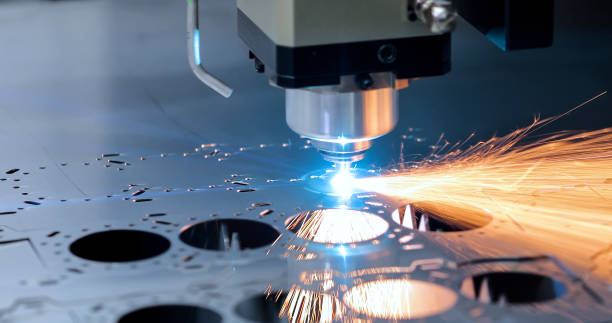CNC (Computer Numerical Control) programming is the backbone of modern manufacturing, transforming designs into precise, repeatable instructions that CNC machines use to create parts and components. Whether you are new to the world of CNC or looking to expand your existing skills, understanding CNC programming will help you unlock the full potential of your CNC machines. In this comprehensive guide, we will explore the fundamentals of CNC programming, including the types of CNC software, the intricacies of G-code, and hands-on tips to help you become a proficient CNC programmer.
What is CNC Programming?
CNC programming involves creating a set of instructions that control a CNC machine to manufacture parts from raw material. These instructions tell the machine when to start, how fast to move, what path to take, and how deep to cut, among other details. CNC programming translates computer designs into real-life products, ensuring consistency and accuracy.
Key Elements of CNC Programming
- G-code: The programming language that directs the CNC machine’s actions, specifying movements, speed, and more.
- CAD/CAM Software: Software tools like CAD (Computer-Aided Design) and CAM (Computer-Aided Manufacturing) are used to design parts and generate the code that runs the CNC machine.
- Tool Paths: Tool paths are the specific routes that the cutting tool will follow during the machining process.
The goal of CNC programming is to produce a part that meets design specifications consistently and efficiently. CNC programmers must understand how different materials behave, how to optimize tool paths, and how to use various spindle motors, such as the 6KW Air-Cooled Spindle with Flange, to achieve precise results. 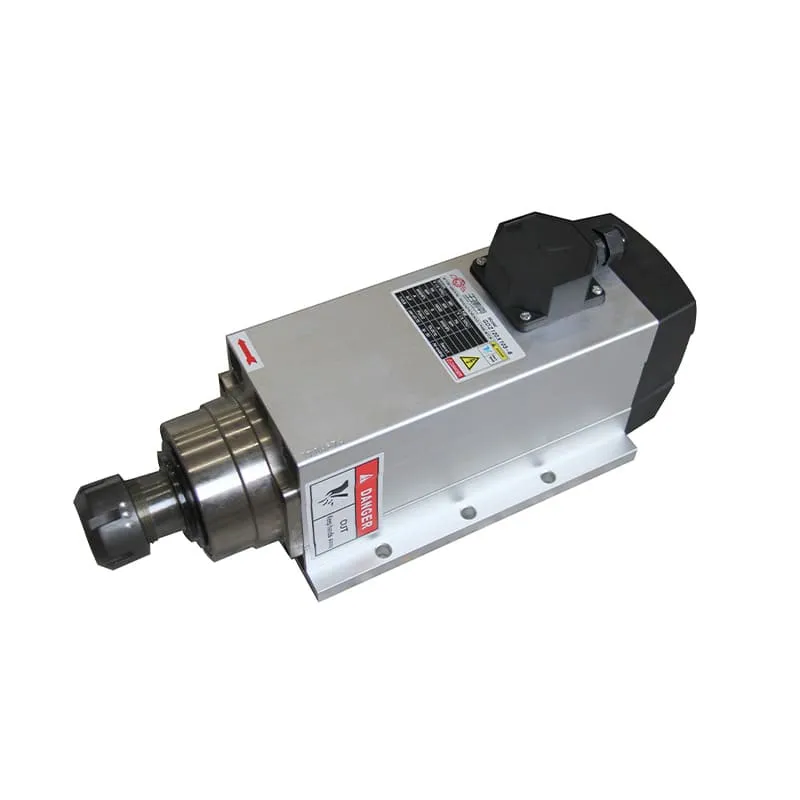
Types of CNC Programming
There are several types of CNC programming methods, each with its own applications, advantages, and challenges. Choosing the right method depends on the complexity of the project, the available tools, and the operator’s expertise.
Manual CNC Programming
Manual CNC programming involves writing G-code directly. This approach is ideal for simple parts or when you need maximum control over the machining process.
- Advantages: Provides complete control over every movement, which is beneficial for simple or unique parts.
- Challenges: Writing G-code manually can be time-consuming and is more prone to errors, especially for complex geometries.
For example, setting up the spindle motor with correct speed parameters is crucial. For smaller projects, using a 1.5KW ER20 Square Air-Cooled Spindle ensures precision without overheating. 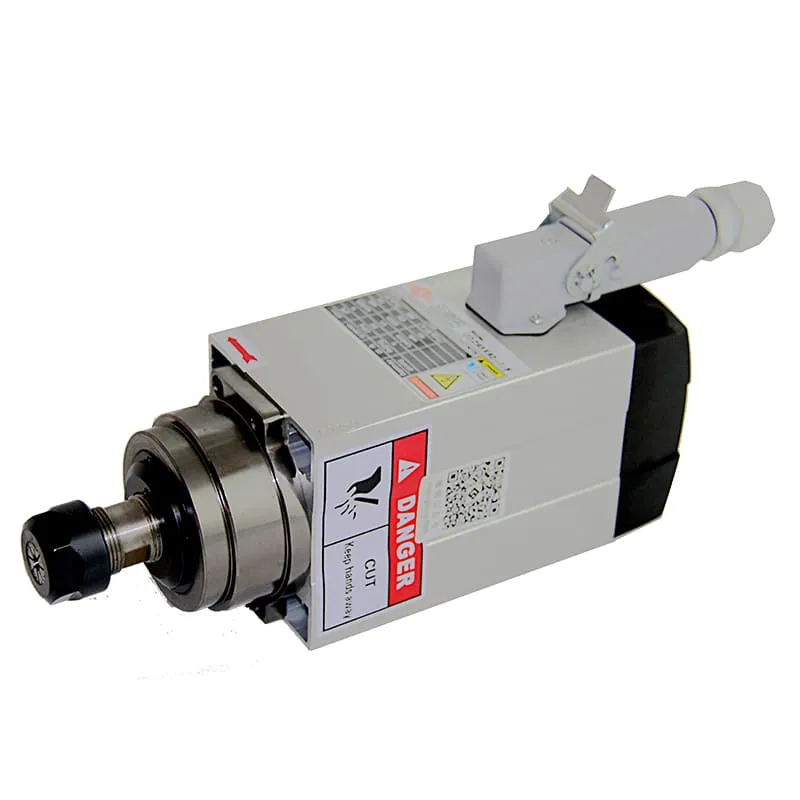
Conversational CNC Programming
Conversational programming allows users to input commands directly into the machine without needing to write complete G-code. The machine’s controller processes the input into machine operations, making it ideal for simpler projects.
- Advantages: Easier to learn and requires less time to produce simple parts.
- Challenges: Limited flexibility for complex projects and lacks the depth of control provided by G-code programming.
CAM Software Programming
Most modern CNC machines rely on CAM software to generate the code needed to run CNC machines. CAM software takes a design created in CAD and converts it into machine-readable G-code.
- Advantages: Greatly simplifies the programming process and is well-suited for complex parts.
- Challenges: Requires knowledge of both CAD software and CAM software, and it can be costly.
With CAM software, spindle motors such as the 24000RPM 0.8KW ER11 Water-Cooled Spindle can be optimized for continuous operation. 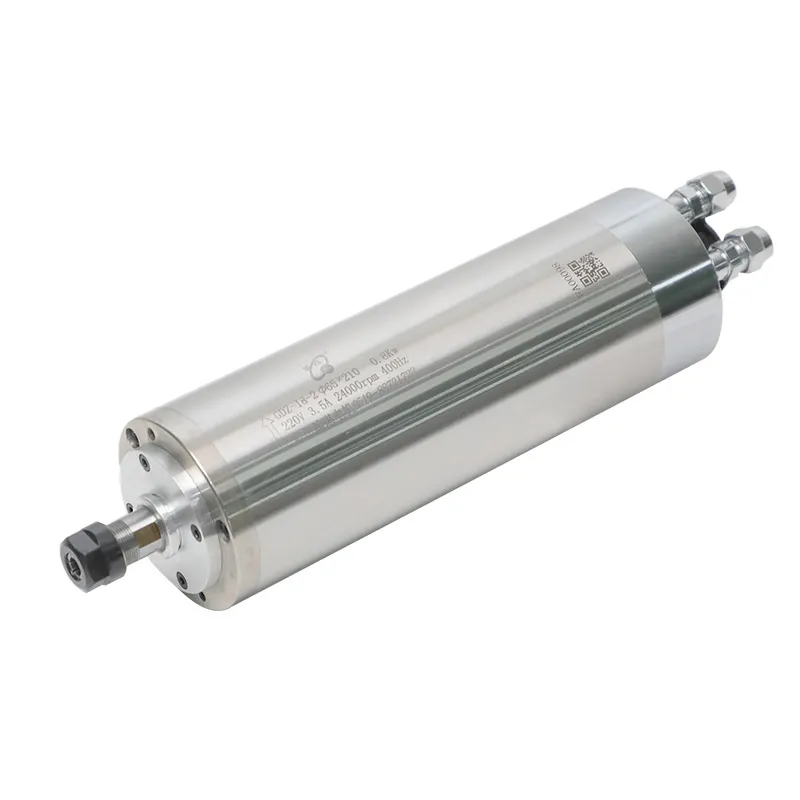
Essential CNC Programming Tools and Software
Learning CNC programming requires familiarity with specific tools and software. Let’s break down some of the critical tools that help in creating effective CNC programs.
CAD/CAM Software
The first step in CNC programming is to create a part design using CAD software. Software like Fusion 360, AutoCAD, or SolidWorks can be used to create these designs. Once the part design is ready, it needs to be converted into G-code using CAM software, which tells the CNC machine how to make the part.
- Fusion 360: This software combines both CAD and CAM capabilities, making it popular for creating complex parts and generating CNC code.
- SolidWorks: Known for its advanced design features, SolidWorks is a widely used tool in the CNC industry for designing intricate parts.
- Mastercam: One of the most popular CAM programs, Mastercam allows for the seamless creation of tool paths and G-code from CAD designs.
G-code Simulators
G-code simulators are used to test a CNC program before running it on the actual machine. These simulators provide a visual representation of how the machine will cut the part, which helps identify any potential errors before any material is wasted.
Choosing the Right Spindle Motor
Selecting the right spindle motor is essential for successful CNC machining. Factors like power, RPM, cooling mechanism, and compatibility with the material being cut must all be considered. For instance, a 5.5KW ER32 4-Pole Air-Cooled Spindle is perfect for heavy-duty machining tasks. 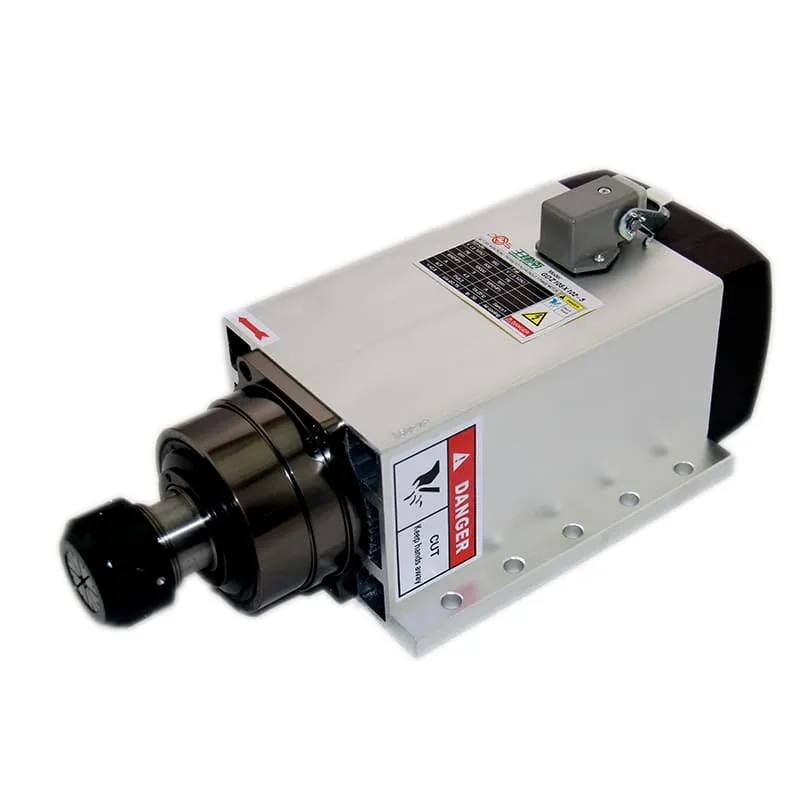
Writing G-Code: Understanding the Basics
G-code is the language that tells CNC machines how to move and what operations to perform. Each line of code represents a specific command, whether it’s to move the cutting tool, adjust the spindle speed, or change tools.
Common G-code Commands
- G00: Rapid movement – moves the cutting tool quickly from one point to another without cutting.
- G01: Linear interpolation – cuts the material in a straight line at a programmed speed.
- G02/G03: Circular interpolation – used to cut arcs or circles.
- M03: Spindle on – starts the spindle at a designated speed.
- M05: Spindle off – stops the spindle.
Example of a Simple G-code
Below is an example of a simple G-code program that makes a straight cut along the X-axis:
This simple program demonstrates the basics of turning the spindle on, making a cut, and turning the spindle off.
How to Optimize CNC Programs
Creating an efficient CNC program goes beyond writing correct G-code. It involves optimizing each command to reduce cycle times, minimize tool wear, and produce the best possible finish.
Tips for Optimizing CNC Programs
- Use Proper Cutting Tools: Select the right cutting tools based on the material being machined and the desired finish. For softer materials, using a spindle like the 24000RPM 800W ER11 Water-Cooled Spindle can help achieve a smooth finish.
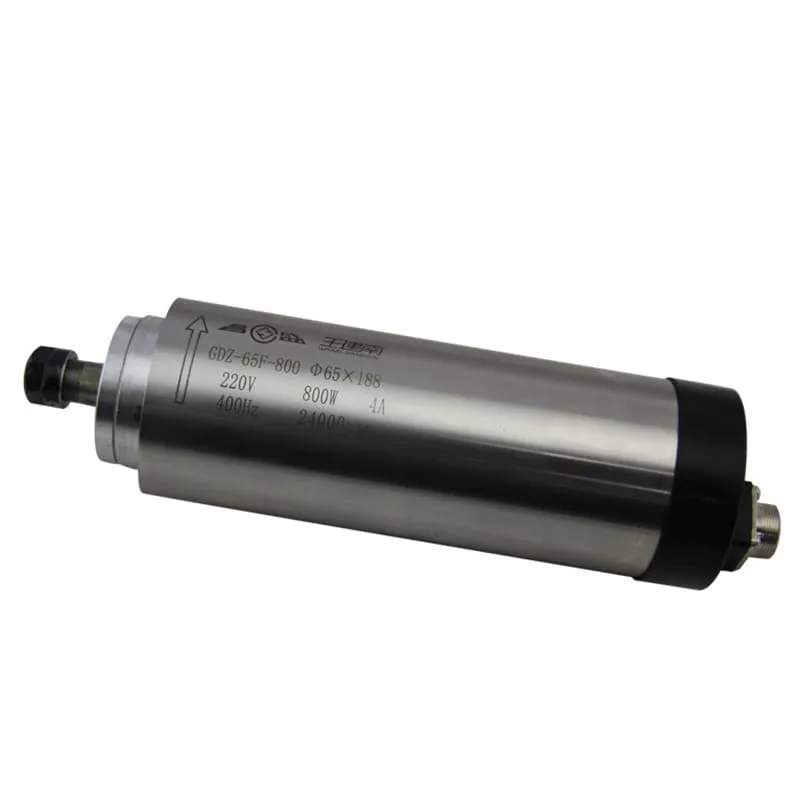
- Adjust Feed Rates and Speeds: The speed and feed rates should be adjusted to match the material and cutting tool. This helps to maintain tool life and achieve optimal machining conditions.
- Reduce Tool Changes: Group operations to minimize tool changes. Tool changes add to the total cycle time, so reducing them can make the process faster.
- Efficient Tool Paths: Minimize unnecessary tool movements. Using CAD/CAM software can help in designing efficient tool paths that reduce cutting time and improve precision.
Common CNC Programming Mistakes and How to Avoid Them
Even experienced CNC programmers can make mistakes. Here are some common mistakes to watch out for and tips on how to avoid them.
Mistake #1: Incorrect Tool Selection
Using the wrong tool can lead to poor quality finishes or even damage the material and machine. Ensure the tool is appropriate for the type of material and the specific cut being made.
Mistake #2: Wrong Spindle Speed
Running the spindle at an incorrect speed can cause tool wear or breakage. For example, using a high RPM spindle like the 60000RPM 300W ER8 Water-Cooled Spindle might be appropriate for fine work, but not for harder materials. 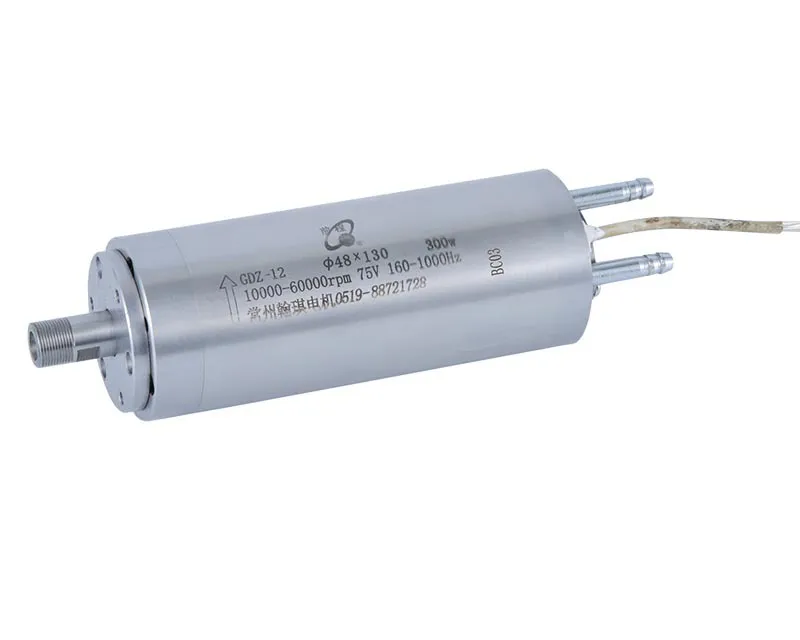
Mistake #3: Overlooking Simulation
Skipping the simulation step can lead to errors during the actual machining. Always use G-code simulators to visualize and verify the program before running it on the machine.
FAQs
1. What is CNC programming?
CNC programming involves creating a set of instructions that control a CNC machine to manufacture parts from raw materials. This includes generating G-code that dictates the machine’s movements, speed, and depth of cuts.
2. What software is used for CNC programming?
Common CAD/CAM software for CNC programming includes Fusion 360, AutoCAD, and Mastercam, which help create and convert designs into G-code.
3. Can I write G-code manually?
Yes, G-code can be written manually for simple parts. However, it can be time-consuming and prone to errors, especially for complex geometries.
4. Why is spindle speed important?
The correct spindle speed ensures that the cutting tool moves at an optimal rate for the material, avoiding premature tool wear or poor finishes.
5. How can I avoid mistakes in CNC programming?
Always verify tool paths using G-code simulators, select the correct cutting tools, and optimize spindle speeds for the material. Proper preparation and simulation are key to avoiding costly errors.
Conclusion
CNC programming is an essential skill that bridges the gap between design and manufacturing, enabling you to turn digital designs into physical products with precision and efficiency. By understanding G-code, mastering CAD/CAM software, and learning to avoid common pitfalls, you can greatly enhance your CNC programming capabilities. Whether you are manually programming or using advanced CAM tools, selecting the right spindle motor, like those available at spindlemotorshop.com, is crucial for achieving accurate and high-quality results.
If you’re ready to elevate your CNC programming skills, visit spindlemotorshop.com for a wide range of high-quality spindles and other CNC accessories to support your machining projects. With the right tools and techniques, you can master CNC programming and achieve outstanding results in your manufacturing endeavors.
# How to Do CNC Programming CNC (Computer Numerical Control) programming is the backbone of modern manufacturing, transforming designs into precise, repeatable instructions that CNC machines use to create parts and components. Whether you are new to the world of CNC or looking to expand your existing skills, understanding CNC programming will help you unlock the full potential of your CNC machines. In this comprehensive guide, we will explore the fundamentals of CNC programming, including the types of CNC software, the intricacies of G-code, and hands-on tips to help you become a proficient CNC programmer. ## What is CNC Programming? CNC programming involves creating a set of instructions that control a CNC machine to manufacture parts from raw material. These instructions tell the machine when to start, how fast to move, what path to take, and how deep to cut, among other details. CNC programming translates computer designs into real-life products, ensuring consistency and accuracy. ### Key Elements of CNC Programming – **G-code**: The programming language that directs the CNC machine’s actions, specifying movements, speed, and more. – **CAD/CAM Software**: Software tools like CAD (Computer-Aided Design) and CAM (Computer-Aided Manufacturing) are used to design parts and generate the code that runs the CNC machine. – **Tool Paths**: Tool paths are the specific routes that the cutting tool will follow during the machining process. The goal of CNC programming is to produce a part that meets design specifications consistently and efficiently. CNC programmers must understand how different materials behave, how to optimize tool paths, and how to use various **spindle motors**, such as the [6KW Air-Cooled Spindle with Flange](https://spindlemotorshop.com/120xf103rd18z6-6kw-air-cooling-spindle/), to achieve precise results.  ## Types of CNC Programming There are several types of CNC programming methods, each with its own applications, advantages, and challenges. Choosing the right method depends on the complexity of the project, the available tools, and the operator’s expertise. ### Manual CNC Programming Manual CNC programming involves writing G-code directly. This approach is ideal for simple parts or when you need maximum control over the machining process. – **Advantages**: Provides complete control over every movement, which is beneficial for simple or unique parts. – **Challenges**: Writing G-code manually can be time-consuming and is more prone to errors, especially for complex geometries. For example, setting up the spindle motor with correct speed parameters is crucial. For smaller projects, using a [1.5KW ER20 Square Air-Cooled Spindle](https://spindlemotorshop.com/gdz93x82-1-5-1500w-er20-square-air-cooling-spindle/) ensures precision without overheating.  ### Conversational CNC Programming Conversational programming allows users to input commands directly into the machine without needing to write complete G-code. The machine’s controller processes the input into machine operations, making it ideal for simpler projects. – **Advantages**: Easier to learn and requires less time to produce simple parts. – **Challenges**: Limited flexibility for complex projects and lacks the depth of control provided by G-code programming. ### CAM Software Programming Most modern CNC machines rely on CAM software to generate the code needed to run CNC machines. CAM software takes a design created in CAD and converts it into machine-readable G-code. – **Advantages**: Greatly simplifies the programming process and is well-suited for complex parts. – **Challenges**: Requires knowledge of both CAD software and CAM software, and it can be costly. With CAM software, spindle motors such as the [24000RPM 0.8KW ER11 Water-Cooled Spindle](https://spindlemotorshop.com/gdz-18-2-800w-er11-water-cooled-spindle/) can be optimized for continuous operation.  ## Essential CNC Programming Tools and Software Learning CNC programming requires familiarity with specific tools and software. Let’s break down some of the critical tools that help in creating effective CNC programs. ### CAD/CAM Software The first step in CNC programming is to create a part design using CAD software. Software like **Fusion 360**, **AutoCAD**, or **SolidWorks** can be used to create these designs. Once the part design is ready, it needs to be converted into G-code using CAM software, which tells the CNC machine how to make the part. – **Fusion 360**: This software combines both CAD and CAM capabilities, making it popular for creating complex parts and generating CNC code. – **SolidWorks**: Known for its advanced design features, SolidWorks is a widely used tool in the CNC industry for designing intricate parts. – **Mastercam**: One of the most popular CAM programs, Mastercam allows for the seamless creation of tool paths and G-code from CAD designs. ### G-code Simulators **G-code simulators** are used to test a CNC program before running it on the actual machine. These simulators provide a visual representation of how the machine will cut the part, which helps identify any potential errors before any material is wasted. ### Choosing the Right Spindle Motor Selecting the right **spindle motor** is essential for successful CNC machining. Factors like power, RPM, cooling mechanism, and compatibility with the material being cut must all be considered. For instance, a [5.5KW ER32 4-Pole Air-Cooled Spindle](https://spindlemotorshop.com/gdz120103-5-5with-fin4-pole5500w-er32/) is perfect for heavy-duty machining tasks.  ## Writing G-Code: Understanding the Basics G-code is the language that tells CNC machines how to move and what operations to perform. Each line of code represents a specific command, whether it’s to move the cutting tool, adjust the spindle speed, or change tools. ### Common G-code Commands – **G00**: Rapid movement – moves the cutting tool quickly from one point to another without cutting. – **G01**: Linear interpolation – cuts the material in a straight line at a programmed speed. – **G02/G03**: Circular interpolation – used to cut arcs or circles. – **M03**: Spindle on – starts the spindle at a designated speed. – **M05**: Spindle off – stops the spindle. ### Example of a Simple G-code Below is an example of a simple G-code program that makes a straight cut along the X-axis: “`g-code G21 ; Set units to millimeters G90 ; Absolute positioning G00 X0 Y0 ; Move to starting position M03 S1200 ; Spindle on at 1200 RPM G01 X100 F300 ; Cut along X-axis to X=100 at a feed rate of 300 mm/min M05 ; Spindle off G00 X0 Y0 ; Return to the start position M30 ; End program “` This simple program demonstrates the basics of turning the spindle on, making a cut, and turning the spindle off. ## How to Optimize CNC Programs Creating an efficient CNC program goes beyond writing correct G-code. It involves optimizing each command to reduce cycle times, minimize tool wear, and produce the best possible finish. ### Tips for Optimizing CNC Programs 1. **Use Proper Cutting Tools**: Select the right cutting tools based on the material being machined and the desired finish. For softer materials, using a spindle like the [24000RPM 800W ER11 Water-Cooled Spindle](https://spindlemotorshop.com/gdz65-800-800w-spindle-water-cooled-router-spindle/) can help achieve a smooth finish.  2. **Adjust Feed Rates and Speeds**: The speed and feed rates should be adjusted to match the material and cutting tool. This helps to maintain tool life and achieve optimal machining conditions. 3. **Reduce Tool Changes**: Group operations to minimize tool changes. Tool changes add to the total cycle time, so reducing them can make the process faster. 4. **Efficient Tool Paths**: Minimize unnecessary tool movements. Using CAD/CAM software can help in designing efficient tool paths that reduce cutting time and improve precision. ## Common CNC Programming Mistakes and How to Avoid Them Even experienced CNC programmers can make mistakes. Here are some common mistakes to watch out for and tips on how to avoid them. ### Mistake #1: Incorrect Tool Selection Using the wrong tool can lead to poor quality finishes or even damage the material and machine. Ensure the tool is appropriate for the type of material and the specific cut being made. ### Mistake #2: Wrong Spindle Speed Running the spindle at an incorrect speed can cause tool wear or breakage. For example, using a **high RPM spindle** like the [60000RPM 300W ER8 Water-Cooled Spindle](https://spindlemotorshop.com/gdz-12-300w-er8-water-cooled-spindle/) might be appropriate for fine work, but not for harder materials.  ### Mistake #3: Overlooking Simulation Skipping the simulation step can lead to errors during the actual machining. Always use G-code simulators to visualize and verify the program before running it on the machine. ## FAQs #### 1. What is CNC programming? CNC programming involves creating a set of instructions that control a CNC machine to manufacture parts from raw materials. This includes generating G-code that dictates the machine’s movements, speed, and depth of cuts. #### 2. What software is used for CNC programming? Common CAD/CAM software for CNC programming includes **Fusion 360**, **AutoCAD**, and **Mastercam**, which help create and convert designs into G-code. #### 3. Can I write G-code manually? Yes, G-code can be written manually for simple parts. However, it can be time-consuming and prone to errors, especially for complex geometries. #### 4. Why is spindle speed important? The correct spindle speed ensures that the cutting tool moves at an optimal rate for the material, avoiding premature tool wear or poor finishes. #### 5. How can I avoid mistakes in CNC programming? Always verify tool paths using G-code simulators, select the correct cutting tools, and optimize spindle speeds for the material. Proper preparation and simulation are key to avoiding costly errors. ## Conclusion CNC programming is an essential skill that bridges the gap between design and manufacturing, enabling you to turn digital designs into physical products with precision and efficiency. By understanding G-code, mastering CAD/CAM software, and learning to avoid common pitfalls, you can greatly enhance your CNC programming capabilities. Whether you are manually programming or using advanced CAM tools, selecting the right spindle motor, like those available at [spindlemotorshop.com](https://spindlemotorshop.com/), is crucial for achieving accurate and high-quality results. If you’re ready to elevate your CNC programming skills, visit [spindlemotorshop.com](https://spindlemotorshop.com/) for a wide range of high-quality spindles and other CNC accessories to support your machining projects. With the right tools and techniques, you can master CNC programming and achieve outstanding results in your manufacturing endeavors.
